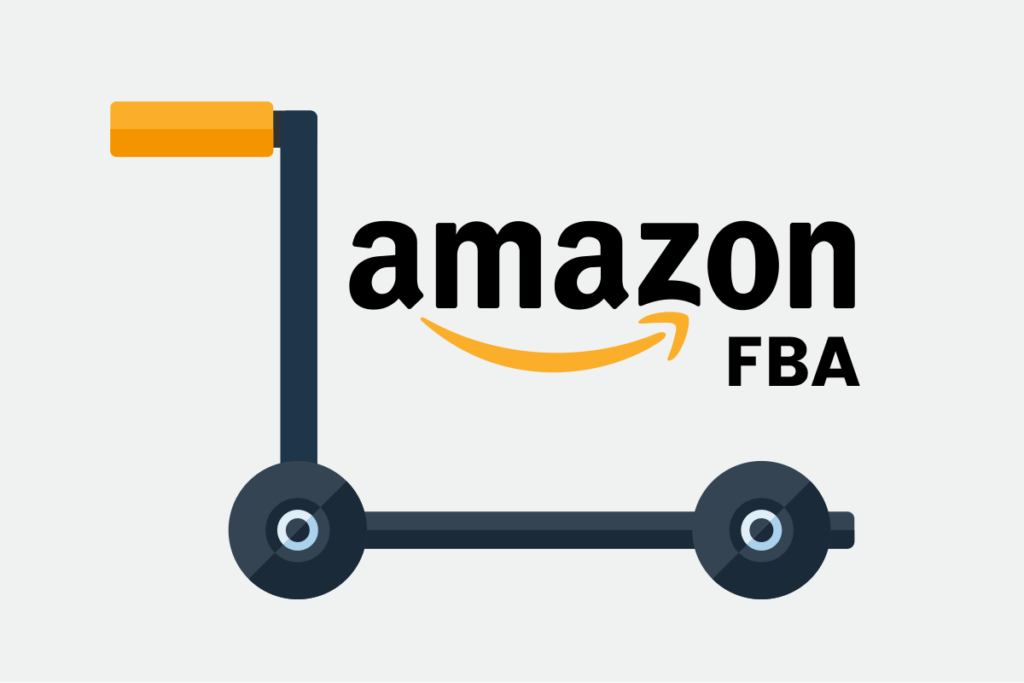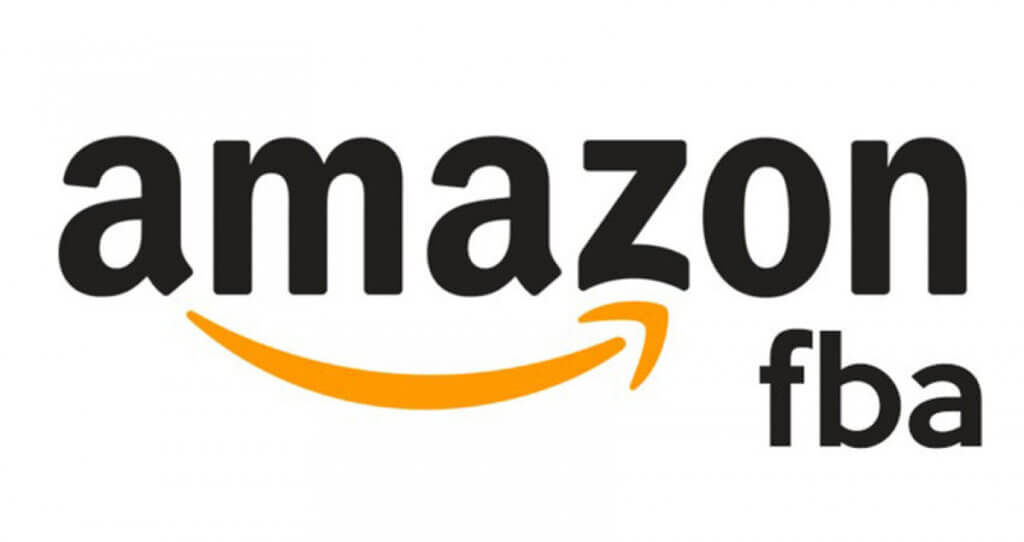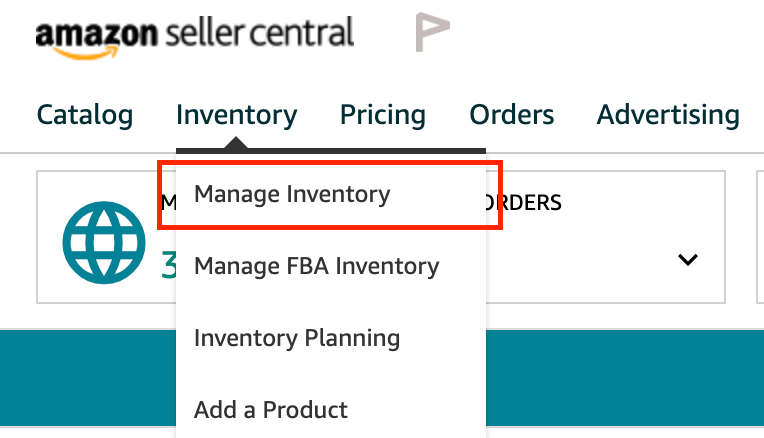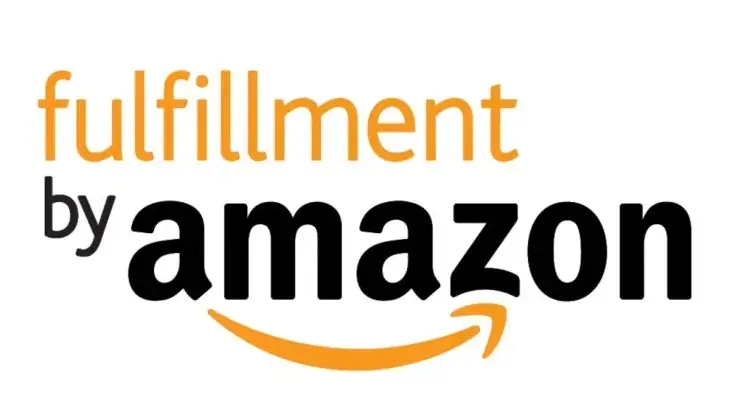Fulfillment by Amazon (FBA)
Introduction:
Fulfillment by Amazon, or FBA, is a service offered by Amazon that allows businesses to store their products in Amazon’s fulfillment centers. Amazon takes care of the picking, packing, and shipping of products to customers and handles customer service and returns.
How does FBA work?
Here’s a brief overview of how FBA works:
- Create an Amazon seller account: To use FBA, you need to have an Amazon seller account.
- Set up FBA: Once you have an Amazon seller account, you can sign up for FBA. You’ll need to provide information about your products, such as the SKU, the quantity you want to send to Amazon, and the selling price.
- Ship your products to Amazon: Once you’ve set up FBA, you’ll need to send your products to Amazon’s fulfillment centers. Amazon will provide you with shipping labels, and you’ll need to follow Amazon’s packing requirements to ensure your products are properly prepared for shipment.
- Amazon stores and ships your products: Once they are in Amazon’s fulfillment centers, Amazon stores your products and sends them to customers when orders are placed.
- Customer service and returns: Amazon handles all customer service inquiries and returns on your behalf.
Advantages of Using FBA
Using FBA can provide several benefits for businesses:
- Increased Sales Potential: With FBA, your products are eligible for Prime shipping, which can help increase sales.
- Prime Eligibility: FBA products are eligible for Prime shipping, which means they’ll be delivered to customers faster and with free shipping, increasing the likelihood of making sales.
- Time Savings: Using FBA means you don’t have to worry about picking, packing, and shipping products to customers, which can save you a lot of time.
- Customer Service: Amazon handles all customer service inquiries and returns on your behalf, which can be a significant relief for businesses.
How to Get Started with FBA
If you’re interested in using FBA for your business, here’s what you need to do to get started:
- Creating an Amazon Seller Account: To use FBA, you need to have an Amazon seller account.
- Setting Up FBA: Once you have an Amazon seller account, you can sign up for FBA. You’ll need to provide information about your products, such as the SKU, the quantity you want to send to Amazon, and the selling price.
- Listing Products on Amazon: Once you’ve set up FBA, you can list your products on Amazon’s marketplace, and customers can start placing orders for your products.
FBA Fees and Pricing
Using FBA comes with some fees and pricing considerations:
- Fulfillment Fees: Fba Amazon fees for the picking, packing, and shipping your products to customers.
- Storage Fees: Amazon charges fees for storing your products in their fulfillment centers.
- Long-Term Storage Fees: If your products remain in Amazon’s fulfillment centers for an extended period, you may be subject to long-term storage fees.
Managing FBA Inventory
Managing your FBA inventory is an integral part of using the service effectively:
- Restocking Inventory: It’s essential to monitor your FBA inventory levels and restock as necessary to ensure your products are always available for customers.
- Removing Inventory: If you need to pull inventory from Amazon’s fulfillment centers, you’ll need to follow Amazon’s removal process.
- FBA Inventory Health: Amazon provides tools to help you monitor the health of your FBA inventory, such as the Inventory Health report.
Advantages of Using FBA:
Fulfillment by Amazon (FBA) is a popular service that allows businesses to outsource their order fulfillment and shipping needs to Amazon. With FBA, companies can store their products in Amazon’s warehouses and have Amazon handle the picking, packing, and shipping their products to customers. Here are some of the advantages of using FBA:
Increased Sales Potential
One of the main advantages of using FBA is that it can help increase a business’s sales potential. This is because products that Amazon fulfills are eligible for Prime shipping, which can increase visibility and improve customer trust. Prime members are more likely to purchase products eligible for Prime shipping because they know they will receive their orders quickly and with free shipping.
Prime Eligibility
FBA products are eligible for Prime shipping, which means they are delivered to customers faster and with free shipping. This can be a huge advantage for businesses, as it can help increase customer satisfaction and loyalty. With FBA, companies can leverage Amazon’s extensive logistics network to provide fast and reliable customer shipping.
Time Savings
Using FBA can save businesses a lot of time and effort. With FBA, companies don’t have to worry about picking, packing, and shipping their products to customers. This can free up time for companies to focus on other aspects of their business, such as marketing, product development, and customer service.
Customer Service
Another advantage of using FBA is that Amazon handles all customer service inquiries and returns on behalf of businesses. This can significantly relieve enterprises, saving them time and resources. Amazon has a team of customer service representatives trained to handle customer inquiries and issues. This can help ensure that customers are satisfied with their purchases and continue to do business with the seller.
In conclusion, Fulfillment by Amazon (FBA) is a powerful tool businesses can use to streamline their order fulfillment and shipping processes. With FBA, companies can increase their sales potential, take advantage of Prime eligibility, save time, and benefit from Amazon’s world-class customer service. If you’re looking to scale your business and improve your order fulfillment and shipping capabilities, FBA may be worth considering.
How to Get Started with FBA:
Fulfillment by Amazon (FBA) is a service that allows businesses to outsource their order fulfillment and shipping needs to Amazon. With FBA, companies can store their products in Amazon’s warehouses and have Amazon handle the picking, packing, and shipping their products to customers. Here’s how to get started with FBA:
Create an Amazon Seller Account
To use FBA, you first need to create an Amazon seller account. You can do this by visiting the Amazon Seller Central website and following the sign-up prompts. Once you have an account, you can access the FBA program and start listing your products for fulfillment.
Set up FBA
Once you have an Amazon seller account, you must set up FBA. This involves creating a shipment plan and sending your products to an Amazon fulfillment center. Amazon will then handle the rest of the fulfillment process, including picking, packing, and shipping your products to customers.
Prepare Your Products for Shipment
Before sending your products to Amazon, you must prepare them for shipment. This involves labeling your products with Amazon’s FBA labels and identifying the products and their intended destination. You also need to package your products in a way that ensures they will be safe during shipment and won’t be damaged in transit.
Send Your Products to an Amazon Fulfillment Center
Once your products are labeled and packaged, you can send them to an Amazon fulfillment center. Amazon will receive your products, store them in its warehouse, and handle the rest of the fulfillment process on your behalf.
Monitor Your Inventory and Sales
Once your products are listed for fulfillment through FBA, you need to monitor your inventory and sales. Amazon provides tools that allow you to track your inventory levels and sales performance, so you can make informed decisions about when to restock your products and how to optimize your pricing and marketing strategies.
In conclusion, Fulfillment by Amazon (FBA) is a powerful tool businesses can use to streamline their order fulfillment and shipping processes. To start with FBA, you must create an Amazon seller account, set up FBA, prepare your products for shipment, send your products to an Amazon fulfillment center, and monitor your inventory and sales. By taking advantage of FBA, you can increase your sales potential, save time, and benefit from Amazon’s world-class customer service.
FBA Fees and Pricing:
Fulfillment by Amazon (FBA) is a popular service that allows businesses to outsource their order fulfillment and shipping needs to Amazon. With FBA, companies can store their products in Amazon’s warehouses and have Amazon handle the picking, packing, and shipping their products to customers. However, there are fees and pricing associated with using FBA. Here’s what you need to know:
Fulfillment Fees
Fulfillment fees are the fees that Amazon charges for picking, packing, and shipping your products to customers. The fulfillment fees vary based on the size and weight of your products, the shipping distance, and the speed. For example, the fulfillment fees for a standard-sized item that weighs less than one pound and is shipped within the contiguous United States range from $2.50 to $4.90.
Storage Fees
Storage fees are the fees that Amazon charges for storing your products in its warehouses. The storage fees vary based on the size and time of year. Amazon charges monthly storage fees for products in its warehouses for more than 365 days and long-term storage fees for products in its warehouses for more than 12 months.
Removal Fees
Removal fees are the fees that Amazon charges to remove your products from its warehouses. If you withdraw your products from Amazon’s warehouses, you will be charged a removal fee based on the size and weight of your products, the shipping distance, and speed.
Other Fees
In addition to fulfillment, storage, and removal fees, other fees are associated with using FBA. For example, there are fees for using multi-channel fulfillment, which allows you to fulfill orders from additional sales channels using your FBA inventory. There are also fees for international shipping and optional services such as prep and labeling services.
Pricing Strategy
When using FBA, developing a pricing strategy that considers the fees and pricing associated with the service are essential. You should consider the fulfillment, storage, and other costs when setting your prices to ensure that you are profitable and competitive.
In conclusion, Fulfillment by Amazon (FBA) is a powerful tool businesses can use to streamline their order fulfillment and shipping processes. However, fees and pricing are associated with using FBA, including fulfillment, storage, removal, and other fees. When using FBA, developing a pricing strategy that considers these fees is essential to ensure that you are profitable and competitive.
Managing FBA Inventory:
Fulfillment by Amazon (FBA) is a popular service that allows businesses to outsource their order fulfillment and shipping needs to Amazon. With FBA, companies can store their products in Amazon’s warehouses and have Amazon handle the picking, packing, and shipping their products to customers. Here’s what you need to know about managing your FBA inventory:
Inventory Placement
When you send your products to Amazon’s warehouses, they may be placed in one or multiple fulfillment centers. Amazon’s inventory placement service gives you more control over where your inventory is placed, which can help reduce your shipping costs and improve your delivery times.
Inventory Management
Amazon’s FBA inventory management tools allow you to monitor your inventory levels and track your sales in real time. You can set up automatic replenishment alerts to ensure you always have enough inventory to fulfill customer orders.
Inventory Reconciliation
Inventory reconciliation ensures that the inventory levels in Amazon’s warehouses match those in your records. Amazon provides tools to help you reconcile your inventory, and it’s essential to do so regularly to avoid any discrepancies that could lead to lost sales or other issues.
Inventory Removal
If you remove your products from Amazon’s warehouses, you can use Amazon’s inventory removal service. This service allows you to create removal orders, which Amazon will fulfill by shipping your products back to you or disposing of them.
Inventory Performance
Amazon’s FBA inventory performance dashboard provides you with key metrics and insights into the performance of your FBA inventory. You can use this dashboard to monitor your inventory health, identify any issues or opportunities for improvement, and make data-driven decisions to optimize your inventory performance.
In conclusion, managing your FBA inventory is crucial to Fulfillment by Amazon (FBA) to outsource your order fulfillment and shipping needs. Inventory placement, management, reconciliation, removal, and performance are all important considerations when managing your FBA inventory. Utilizing Amazon’s inventory management tools and services ensures your FBA inventory is optimized for success.
FBA Shipping and Delivery:
One of the most significant advantages of using Fulfillment by Amazon (FBA) is the shipping and delivery options that it provides. Here’s what you need to know about FBA shipping and delivery:
Shipping to Amazon’s Warehouses
To use FBA, you’ll need to ship your products to Amazon’s warehouses. Amazon provides detailed instructions on preparing and labeling your products for shipment, and you can use Amazon’s partnered carriers to ship your products to Amazon’s warehouses.
Prime Shipping
FBA products are eligible for Amazon Prime shipping, which provides fast, free shipping to Prime customers. This can help improve your sales and customer satisfaction, as many customers look for products eligible for Prime shipping.
Multi-Channel Fulfillment
FBA also offers multi-channel fulfillment, which allows you to fulfill orders from other sales channels using your FBA inventory. This means you can sell your products on your website or other marketplaces, and Amazon will handle the fulfillment and shipping of those orders.
International Shipping
FBA also provides international shipping options, which can help you expand your reach and sell your products to customers worldwide. Amazon provides global export, import, and local delivery services in many countries.
Customer Service
Amazon’s FBA customer service team is available to help with any shipping or delivery issues that may arise. They can help track packages, resolve delivery issues, and handle returns and refunds.
In conclusion, Fulfillment by Amazon (FBA) provides a range of shipping and delivery options that can help you streamline your order fulfillment process and improve customer satisfaction. From shipping to Amazon’s warehouses and Prime shipping to multi-channel fulfillment and international shipping, FBA offers various services to meet your shipping and delivery needs. Additionally, Amazon’s FBA customer service team is available to assist with any issues that may arise, ensuring that your customers have a positive experience with your products.
FBA Returns and Customer Service:
Fulfillment by Amazon (FBA) handles your order fulfillment and shipping needs and provides customer service and returns management. Here’s what you need to know about FBA returns and customer service:
Customer Service
Amazon’s FBA customer service team can handle customer inquiries and issues related to your FBA products. They can assist with product questions, shipping inquiries, and order issues. This can help improve customer satisfaction and reduce time on customer service tasks.
Returns Management
FBA also manages returns on your behalf. Amazon’s return policy applies to FBA products, and customers can initiate returns directly through Amazon’s website. Amazon handles the returns processing and refunds, and you can choose whether or not to have the returned products returned to you.
FBA Returns
FBA also offers a returns service for products that Amazon does not fulfill. This service allows customers to return products directly to Amazon’s warehouses, and Amazon handles the processing and refunding of those returns. This can help simplify your returns process and improve your customer satisfaction.
Refunds
Amazon provides automatic refunds for FBA orders that the customer cancels or refunds. The repayments are processed within two business days and are deposited directly into your Amazon seller account. You can also view and manage your refunds through Amazon’s seller dashboard.
Seller Performance
Your seller performance can impact your eligibility for FBA and the success of your FBA products. Amazon provides tools and metrics to help you monitor and improve your seller performance, including your order defect rate, cancellation rate, and late shipment rate.
In conclusion, Fulfillment by Amazon (FBA) provides customer service and returns management services that can help simplify your operations and improve customer satisfaction. With FBA’s customer service team handling customer inquiries and issues and FBA’s returns management controlling returns on your behalf, you can focus on growing your business. Additionally, Amazon provides tools and metrics to help you monitor and improve your seller performance, ensuring that you meet FBA eligibility requirements and optimize your FBA products’ success.
FBA for International Sellers:
Fulfillment by Amazon (FBA) provides international sellers with the opportunity to expand their business and reach customers around the world. Here’s what you need to know about using FBA as an international seller:
Eligibility
International sellers can use FBA if they have a professional seller account on Amazon.com or one of Amazon’s other marketplaces, such as Amazon.co.uk or Amazon.ca. However, international sellers may need to meet additional requirements, such as providing a valid tax identification number and bank account in the country where they are registered.
Shipping to Amazon’s Warehouses
International sellers must ship their products to Amazon’s warehouses, which may require additional shipping costs and time. Amazon guides prepare and label your products for shipment to their warehouses.
Multi-Country Inventory
FBA offers a Multi-Country Inventory (MCI) program that allows international sellers to store their products in multiple countries. This can help reduce shipping costs and delivery times, as customers can receive products from the nearest fulfillment center.
Global Export and Import Services
FBA provides global export and import services that can help international sellers ship their products to customers worldwide. Amazon manages the export and import process, including customs clearance and documentation, to ensure a smooth and hassle-free experience for both the seller and the customer.
Local Delivery Services
FBA also offers local delivery services in many countries, which can help international sellers reach customers in those regions—Amazon partners with local carriers to provide fast and reliable delivery services. International sellers can use these services to improve customer satisfaction and expand their customer base.
In conclusion, Fulfillment by Amazon (FBA) provides international sellers with various vices and programs to help them expand their business and reach customers worldwide. From shipping to Amazon’s warehouses and multi-country inventory to global export and import services and local delivery services, FBA offers a variety of options to meet the unique needs of international sellers. Additionally, Amazon provides guidance and support to help international sellers navigate the process and maximize their success on the platform.
Conclusion:
In conclusion, Fulfillment by Amazon (FBA) is a powerful tool for online sellers looking to streamline their operations, reduce costs, and reach a wider audience. Here are the key takeaways from this article:
- FBA allows sellers to store their products in Amazon’s warehouses, which means Amazon handles the picking, packing, shipping, and customer service for those products.
- FBA provides a range of benefits for sellers, including reduced shipping costs, access to Amazon Prime customers, and increased visibility on the platform.
- FBA fees and pricing can vary depending on several factors, but Amazon provides transparent information and tools to help sellers calculate their costs and maximize their profits.
- Managing inventory with FBA requires careful attention to product listings, replenishment, and removals, but Amazon provides tools and guidance to help sellers stay on top of their lists.
- FBA offers a range of shipping and delivery options, including expedited shipping, international shipping, and same-day delivery, which can help sellers improve customer satisfaction and loyalty.
- Returns and customer service are a vital part of the FBA experience, and Amazon provides tools and support to help sellers manage returns and resolve customer issues quickly and effectively.
Overall, FBA can help online sellers grow their businesses and succeed on the Amazon platform. Whether you’re just starting or looking to take your business to the next level, FBA offers various services and benefits to help you achieve your goals. With the right strategy, tools, and support, you can make the most of this powerful tool and succeed as an online seller on Amazon.
F.A.Q
How to start amazon fba?
Here are the basic steps to start Amazon FBA:
- Create an Amazon seller account: If you don’t already have one, you’ll need to create an Amazon seller account to access FBA.
- Source your products: Find products to sell on Amazon by manufacturing or sourcing them from a supplier.
- Create product listings: Create high-quality product listings with clear titles, descriptions, and images to make your products stand out to potential buyers.
- Enroll in FBA: Once your product listings are complete, enroll in FBA and choose which products you want to send to Amazon’s fulfillment centers.
- Prepare your products: Follow Amazon’s labeling and packaging guidelines, then ship them to Amazon’s fulfillment centers.
- Manage your inventory: Use Amazon’s seller tools to manage your inventory, monitor sales, and track your profits.
- Optimize your listings: Continuously optimize your product listings to improve your visibility and increase sales.
Starting an Amazon FBA business can be a lucrative opportunity for online sellers. Following these basic steps, you can begin with FBA and grow your business on the Amazon platform.
Is it worth starting Amazon FBA?
Whether or not it is worth starting an Amazon FBA business depends on your goals, resources, and circumstances. Here are some factors to consider:
- Potential profits: Selling products on Amazon FBA can be a lucrative business if you can source and market products effectively. However, you must factor in fees and other expenses associated with selling on Amazon.
- Competition: Selling on Amazon FBA means competing with other sellers in your product category. You will need to do thorough research to identify gaps in the market and find ways to differentiate yourself from other sellers.
- Time commitment: Starting and managing an Amazon FBA business can require a significant time commitment, especially when sourcing products and creating product listings.
- Resources: To start with Amazon FBA, you must invest in inventory, shipping supplies, and possibly marketing and advertising to promote your products.
Overall, starting an Amazon FBA business can be a viable option for those with the resources and dedication to make it successful. However, it is essential to thoroughly research the market and competition, factor in the costs and time commitment, and have a clear strategy for sourcing and marketing products.
What is a fulfillment order on Amazon FBA?
A fulfillment order on Amazon FBA refers to picking, packing, and shipping an order to a customer who has purchased a product from an Amazon seller who uses FBA. When a customer orders a product, Amazon’s fulfillment center receives the order and picks the product from the seller’s inventory, packs it in Amazon-branded packaging, and ships it to the customer on behalf of the seller.
By using FBA, sellers can leverage Amazon’s extensive fulfillment network to provide fast and reliable shipping to customers while freeing up their time and resources to focus on other aspects of their business. FBA also provides additional services, such as customer service and returns processing, further streamlining the fulfillment process for sellers.
Overall, FBA fulfillment orders are a crucial aspect of the Amazon platform, helping sellers to deliver high-quality customer service and streamline their operations.







